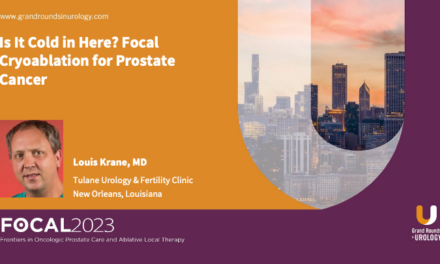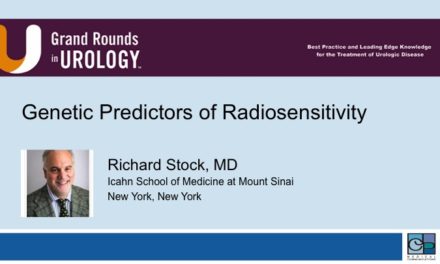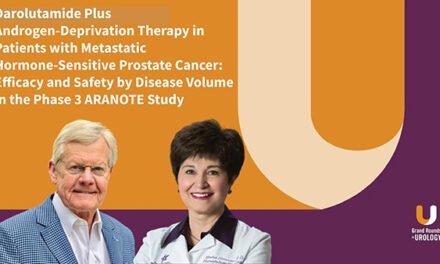
PCa Commentary | Volume 155 – July 2021
Posted by Edward Weber | July 2021
HOT FLASHES: Physiology and Treatment — A Basic Primer
Hot flashes are an especially unpleasant adverse effect of androgen deprivation therapy (ADT). They occur with varying intensity in about 70% of men undergoing treatment. Hot flashes (also termed hot flushes) are experienced as a feeling of increased body heat associated with vasodilation (the ‘flash’), as well as sweating and chills resulting from an imbalance of the sex hormones, i.e., testosterone (T) and estradiol (E2), the predominant form of serum estrogen. The imbalance is registered in the hypothalamus, a master gland in the central brain, which contains the thermoregulatory center that maintains the core body temperature within a narrow range.
Although hot flashes are usually included in the extensive list of adverse effects from a lowered serum testosterone, hot flashes are mainly caused by a deficiency of estrogen, which unbalances the ratio of T to E2. The two hormones each have their own biological effects, although there is some overlap of symptoms. A lowered E2 is associated with increased fracture risk, diminished libido, reduced bone mineral density and osteoporosis, hot flashes, gynecomastia (enlarged breasts) and nipple tenderness, adverse lipid levels and elevated cholesterol, fat gain, sleep disturbance, and memory loss. Deficiency of T mainly causes erectile dysfunction and muscle weakness and diabetes. Lean body mass decreases; fatty tissue increases.
Biology of Estradiol During ADT: Two adverse effects closely linked.
Fifty to 75% of estradiol in men results from enzymatic conversion of serum T. The remainder is locally produced in fatty tissue, bone, and brain. The hypothalamus responds to the rapid loss of E2 due to ADT by stimulating heat dissipation via vasodilation, sweating, and cold seeking.
The normal level of E2 in males is ~73 pmol/L. During ADT, as a result of the markedly lower
T level, say, to 20-30 ng/dL, there is less T available for conversion. Consequently, the male
E2 level drops to 28 pmol/L or lower, resulting in hot flashes.
The second major adverse effect of estrogen deficiency is diminished bone mineral density. This leads to an increased rate of fractures and osteoporosis. Bones are constantly remodeling. The maintenance of normal bone structure relies on a balance between new bone formation (osteoblastic activity) and bone resorption (osteoclastic activity). Estrogen deficiency with E2 levels of 27 pmol/L or less results in increased bone resorption effecting a loss of bone density and bone structure. This adverse process begins at the very onset of ADT, leading to a 7% loss of bone density in the first year and yearly thereafter. As noted in Shore, Higano, et al, an excellent reference, “More than 90% of men on ADT have osteoporosis after 10 years of therapy,” (“Estrogenic Side Effects of Androgen Deprivation Therapy,” Reviews in Urology, 2007).
Fragility fractures are reported to occur in men on ADT at a rate of 5-8%/year. In aggregate, fractures, with their attendant complications, reduce overall survival.
Low-dose transdermal E2 (see below) can slow and reverse the bone weakening and reduce the fracture risk resulting from ADT.
[For a discussion of treatments to protect bone health during ADT, see PCa Commentary
Vol. 150: Bone Health and Bone Protective Agents.]
click link below or visit https://prostatecancerfree.org/prostate-cancer-news
Non-Hormonal Medications to Control Hot Flashes:
A consortium of oncology nurses published an extensive review of pharmacologic means to address hot flashes (Oncology Nursing Forum, 2020). The antidepressant venlafaxine (Effexor, extended release) was their best recommendation, but they judged its effectiveness only a bit better than doing nothing. Venlafaxine functions by increasing serotonin levels in neural synapses in the brain with the aim of reducing anxiety and depression. It has significant adverse effects. However, more importantly, it does not address the basic issue, i.e., hormonal imbalance of T to E2.
Progesterone (Megace) at 20 mg twice daily PO has been studied for the prevention of hot flashes (Loprinzi et al, NEJM, 1994). Seventy-five percent of 66 men who were experiencing a median of 8.4 hot flashes per day showed a 50% decrease in hot flashes. Megace is not FDA-approved for this use. Blood clots may occur and there is concern that the drug may influence the progression of prostate cancer.
Low-Dose Transdermal E2 in the Treatment of Hot Flashes:
A frequently overlooked and largely effective approach to reducing hot flashes is the twice weekly applications of low-dose transdermal E2 patches for men with prostate cancer undergoing ADT.
*Gerber et al:
This is the classic study of E2 for the control of hot flashes and is frequently referenced. A small study of 12 men by Gerber et al (Urology, 2000) reported the effectiveness of two different patch doses (0.05 mg and 0.1 mg). The 0.1 mg twice weekly was the most effective. Baseline median E2 value was raised from 44.4 pmol/L to 99 pmol/L, resulting in a significant reduction in the overall severity of hot flashes in 10 of 12 men. The T level remained unchanged. Mild, painless breast swelling or nipple tenderness was noted in 5 of 12 men.
*Commercial Patch Sources:
One type of patch (out of many options) is the Estraderm transdermal patch at 0.05 or 1.0 mg/patch applied twice weekly (see https://rxlist.com>estraderm drug). At that site, under ‘dosage’ there are instructions as to how to use patches. A second source is Sandoz, offering multiple patch doses and a generic version, Vivelle-Dot, by Novartis Pharmaceuticals.
*Gynecomastia and nipple pain are a variable consequence of replacement E2. They can be addressed with 1 or 2 treatments of low-dose radiation to address the stem cells in the breast buds. But since the development of gynecomastia is unpredictable, prophylactic radiation is most times not administered. However, radiation can be helpful, but less so, if given early in breast enlargement.
BOTTOM LINE:
Most men, being men, if the hot flashes are not too severe, will tough it out, anticipating lessening when the period of ADT ends. But for significantly troublesome hot flashes, consideration might well be given to low-dose transdermal E2 patches which provide the additional benefit of improving ADT-impaired bone density.
Your comments and requests for information on a specific topic are welcome e-mail ecweber@nwlink.com.
Please also visit https://prostatecancerfree.org/prostate-cancer-news for a selection of past issues of the PCa Commentary covering a variety of topics.
“I want to thank Dawn Scott, Staffperson, Tumor Institute Radiation Oncology Group, and Mike Scully, Librarian, Swedish Medical Center for their unfailing, timely, and resourceful support of the Commentary project. Without their help this Commentary would not be possible.”
ABOUT THE AUTHOR
Edward Weber, MD, is a retired medical oncologist living in Seattle, Washington. He was born and raised in a suburb of Reading, Pennsylvania. After graduating from Princeton University in 1956 with a BA in History, Dr. Weber attended medical school at the University of Pennsylvania. His internship training took place at the University of Vermont in Burlington.
A tour of service as a Naval Flight Surgeon positioned him on Whidbey Island, Washington, and this introduction to the Pacific Northwest ultimately proved irresistible. Following naval service, he received postgraduate training in internal medicine in Philadelphia at the Pennsylvania Hospital and then pursued a fellowship in hematology and oncology at the University of Washington.
His career in medical oncology was at the Tumor Institute of the Swedish Hospital in Seattle where his practice focused largely on the treatment of patients experiencing lung, breast, colon, and genitourinary cancer and malignant lymphoma.
Toward the end of his career, he developed a particular concentration on the treatment of prostate cancer. Since retirement in 2002, he has authored the PCa Commentary, published by the Prostate Cancer Treatment Research Foundation, an analysis of new developments in the prostate cancer field with essays discussing and evaluating treatment management options in this disease. He is a regular speaker at various prostate cancer support groups around Seattle.




